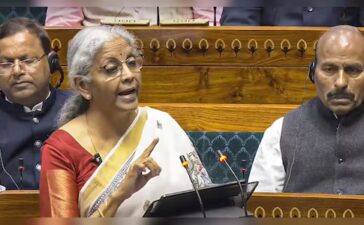There’s no shortage of analysis of the various use cases where payments, credit and other offerings can be delivered outside the realm of traditional financial services. But maybe what’s needed is more conversation about how it all needs to be delivered — and what gets in the way of the consumer’s experience.
Thredd CEO Jim McCarthy told Karen Webster, as a part of the What’s Next in Payments series on embedded finance, that in many cases, embedded options presented to consumers are still clunky. They miss the mark, they’re not personalized — and in fact, they can feel more like spam flooding one’s inbox than a truly useful financial tool that meets the consumer at the moment of need.
“Context is important,” he said, “and how you plug into the context that you [as a firm] are serving is very important.”
Partnerships have been successful, he said — witness the link-up between Affirm and Peloton, where the former’s pay-over-time financing options presented at the time of purchase have made the latter’s pricey exercise bikes more affordable.
But where things go wrong is when there are too many stutter steps in the process — friction, credit checks, data to be entered manually by the consumer … where an opportunity to close the sale is ultimately abandoned, or at best another payment method is chosen.
Sounding a note of caution as to the current state of embedded finance, McCarthy said, “In some ways, we’re moving backwards, unfortunately — because of risk, and fraud and regulations.” Various regulatory regimes and mandates (such as the U.K.’s four-day waiting period on some transactions to examine authorized push payments, short-circuiting the “instant” nature of those payments); KYC and KYB checks, while well-intentioned, slow things down and make embedded experiences tougher to deliver. McCarthy himself recounted that, as he resides in Europe, his bank will phone him in the middle of an eCommerce transaction tied to 3DS to authenticate him.
“Payments certainty has become payment uncertainty,” he told Webster, “and even knowing who’s got the risk [and bears liability for fraud] is uncertain … payments is about risk management and counterparties … and it feels, with embedded finance, without understanding the risk, we’re taking those steps backward.”
It’s not too far-fetched to think that, in the age of data breaches and stolen credentials, consumers are wary of sharing their credentials … unless it’s with the commerce ecosystems they trust. Uber is a perennial example here, and Lyft too, with earned wage access, invisible payments and other interactions well-woven into the background.
The Ecosystem Advantage
McCarthy said embedded finance is best suited to thrive within those defined ecosystems, where payments are at the heart of commerce, and where data flowing within these ecosystems between lenders, consumers, banks and others can help make sound risk management and underwriting decisions.
The players who get it right? Well, they go back a ways. And in some cases go back a long way, more than a decade ago. Though not necessarily an embedded finance player, Apple’s Apple Pay proves instructive here, launching a decade ago as a way to “bust out of the queue and take the Apple Pay mark and drop it next to any item in an eCommerce site … turning it into a one-click experience,” he said.
The good news is that the technology — the pipes, the digital wrappers and the rails — are all there to deliver the magical experience promised by embedded finance.
More recently, said McCarthy, “It’s the ecosystem players — like Square and others” that leverage their end-to-end visibility across their own platforms to create and cross-sell embedded offerings.
Square sellers can, within the walls of the company’s ecosystem, get a loan based on their sales volumes and payment histories on those (and past) loans extended by the platform. “They get paid and all of sudden this turns into a loan, magically,” and instantly, said McCarthy, who added, “because Square is behind the scenes underwriting the payment flows … it’s all there because of the money in and the money out.”
At a high level, he told Webster, as long as the ecosystem can serve up the right product — at the right point in time, with the right message, underwritten with robust risk management models — repeat usage is more likely than not to occur.
“The ecosystems have the ability to create these wonderful experiences,” he told Webster, “because they have all the ‘pieces’ to wrap up correctly and serve it up at the right time, with the right underwriting. And they’re doing it all very well.”


















